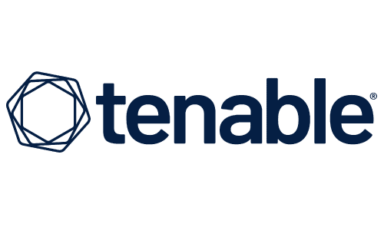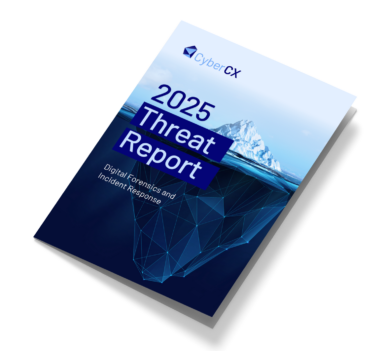Tenable and CyberCX
Tenable vulnerability management solutions that reduce
cyber security risk and strengthen network security


A comprehensive vulnerability management approach
Strengthen your digital ecosystem with a comprehensive range of vulnerability management and cyber exposure management solutions to protect your business.
We’ve combined market-leading technology solutions provider Tenable with our skills, knowledge and management of cyber risks to deliver an unparalleled level of security to our customers.
Market leading technology
Tenable is the premier vulnerability management company in the World for over 30,000 organizations. Most importantly, Enterprise and Governments rely on Tenable to help them understand and reduce cybersecurity risk through enhanced visibility of cyber exposures.
Tenable products include the ground breaking nessus, still the worlds number one vulnerability assessment solution, tenable.ot for operational technology environments, tenable.sc for prioritised treatment of risk, tenable.ad to disrupt attack paths, tenable.io which focuses on cloud and container security, tenable lumin to enable benchmarking and tenable.ep for unified visibility across your entire digital footprint.
Tenable technology is uniquely placed to support IoT, SCADA and Control Systems within critical infrastructure.
Reduce cyber security risk with CyberCX and Tenable
CyberCX are end users of Tenable technology within our own Security Testing and Assurance practice to help illuminate the cyber exposures of our clients. We deploy Tenable technology directly for clients through our leading Security Integration and Engineering practice, and leverage the power of Tenable in our Managed Security Services offerings. The partnership therefore connects market leading technology from Tenable with the talent, skills and practical knowledge of CyberCX, which, in turn maximises solution performance for clients across the Australian and New Zealand marketplace.
Through the process of understanding risks across all device types including cloud, OT and IOT, Tenable provides actionable insights for cyber professionals and executives alike.
To learn more about vulnerability management for critical infrastructure, please review our recent solution spotlight on the topic.
Accurately identify, prioritise, optimise and manage vulnerabilities
The CyberCX partnership with Tenable helps our customer:
- Identify where there is current vulnerability exposure
- Understand the risks associated with those vulnerabilities
- Prioritisation treatment based on risk
- Fully optimise Tenable capabilities and technology to reduce risk exposure over time
- Benefit from a fully managed vulnerability management solution.
Our credentials speak for themselves
CyberCX maintains a significant ongoing investment in our partnership with Tenable. As a result, CyberCX is one of the most highly certified and capable partners in the Asia Pacific region.
Tenable FAQ
The tenable Cyber Exposure Management suite of products provide visibility, management, reporting and alerting across multiple environments including IT, OT, Cloud and IoT. At a high level these include:
- >tenable.sc – on premise vulnerability management
- tenable.io – cloud based vulnerability management
- >tenable.ot – vulnerability management for operational technology
- tenable.ad – continuous, agentless scanning of Active Directory
- Nessus – stand-alone vulnerability assessment
Nessus Professional is a vulnerability scanner made by tenable. It is aimed at security professionals wanting to scan assets and report on vulnerabilities.
Tenable.sc and the cloud based Tenable.io are more comprehensive vulnerability management solutions, powered by the Nessus vulnerability scanning technology. These more comprehensive suites introduce advanced management, monitoring and workflow features such as:
- Continuous scanning for vulnerabilities
- Ongoing vulnerability management
- Automated asset discovery
- Patching prioritisation based on risk
- Improved reporting
- Near real-time alerting
- Attack surface monitoring and management
A Security Information and Event Management (SIEM) solution is a collection of services designed to collect an organisation’s security related events to find anomalies that could constitute a cyber attack. It does this by correlating and analysing logs and data from multiple systems to find anomalies. While Tenable in itself is not a SIEM, it is often used as an additional source of information, to provide additional context and to enrich the data in a SIEM. The ability to add tenable data to a SIEM enables more advanced correlations to be created while at the same time enabling analysts to obtain critical context during incident investigations.
Application Containers help reduce deployment time, improve efficiency, consistency, and availability of applications. The container is an all-in-one package for software applications. They include the application binaries, software components they depend on, as well as the requirements needed to run the application container. Containerisation enables greater portability, scalability, higher productivity, easier management and faster deployment cycles. However, security needs to be carefully considered.
Tenable.io Container Security is integrated into the tenable vulnerability management platform. It continuously monitors container images for security vulnerabilities, potential malware as well as enterprise policy compliance.
Tenable.io Container Security integrates with a variety of continuous integration and continuous deployment (CI/CD) pipelines and solutions to store the container images and scan these as they are built. Tenable.io provides vulnerability and malware detection and continuous monitoring of container images as well as policy compliance enforcement.
Web application vulnerability scanning is a form of external scanning that targets specific vulnerabilities like SQL injection, cross-site scripting, path traversal, command injection and other security related server configuration issues.
Tenable offers this functionality as tenable.io web app scanning or part of their tenable.ep solution suite. It has been designed to minimize false positives and negatives and accurately report vulnerability coverage allowing security teams to understand the actual security risks around an organisation’s web applications.
Any discovered issues and related information are presented on an intuitive dashboard so these can be managed by the security teams.
A Network Vulnerability Scanner utilizes multiple components to scan assets and produce a list of vulnerabilities found on these. The scanner works off a constantly updated database of known vulnerabilities. It scans the target systems and tests for the presence of these vulnerabilities. Network vulnerability scans can be run in a number of different ways:
- External – scan of publicly accessible assets over the Internet
- Internal – scan of internal assets by an internal scanner
- Local – scan of local device via locally installed agent software
Internal scans may be either authenticated, assuming credentials to the scan target have been provided, or unauthenticated scans, where only basic fingerprinting can be used to determine the patching state of the target system. Authenticated, internal scans and agent based scans provide maximum visibility into existing, unpatched vulnerabilities on the target assets.
Vulnerability assessments are critical for any organisation that wants to prevent unauthorized access to its systems and to reduce their attack surface. Unlike a basic vulnerability scan, a vulnerability assessment provides additional context around the discovered vulnerabilities and comprises of a range of tasks including:
- Cataloguing the different assets, their criticality and the capabilities of each system
- Inventory gap analysis to ensure a vulnerability scan covers all critical assets
- Running a vulnerability scan to discover unpatched vulnerabilities on these systems
- Ranking and classification of discovered vulnerabilities to estimate the relative importance of patching and existing risk exposure
Following this process allows organisations to clearly understand their security posture in relation to vulnerability patching and to then prioritize their patching efforts to minimise exposure as quickly as possible.
The attack surface of any environment, also referred to as the digital footprint, is the total sum of different attack points, including internal and external systems, cloud services, mobile and laptop devices and other endpoints, where an attacker can attempt to bypass security and gain unauthorized access to an organisation’s systems.
The tenable suite of products enables organisations to eliminate network blind spots and fully understand and manage an organisation’s entire attack surface. Tenable solutions continuously monitor and assess the attack surface to enable the security teams to manage and reduce exposure and in turn reduce the risk of compromise.


